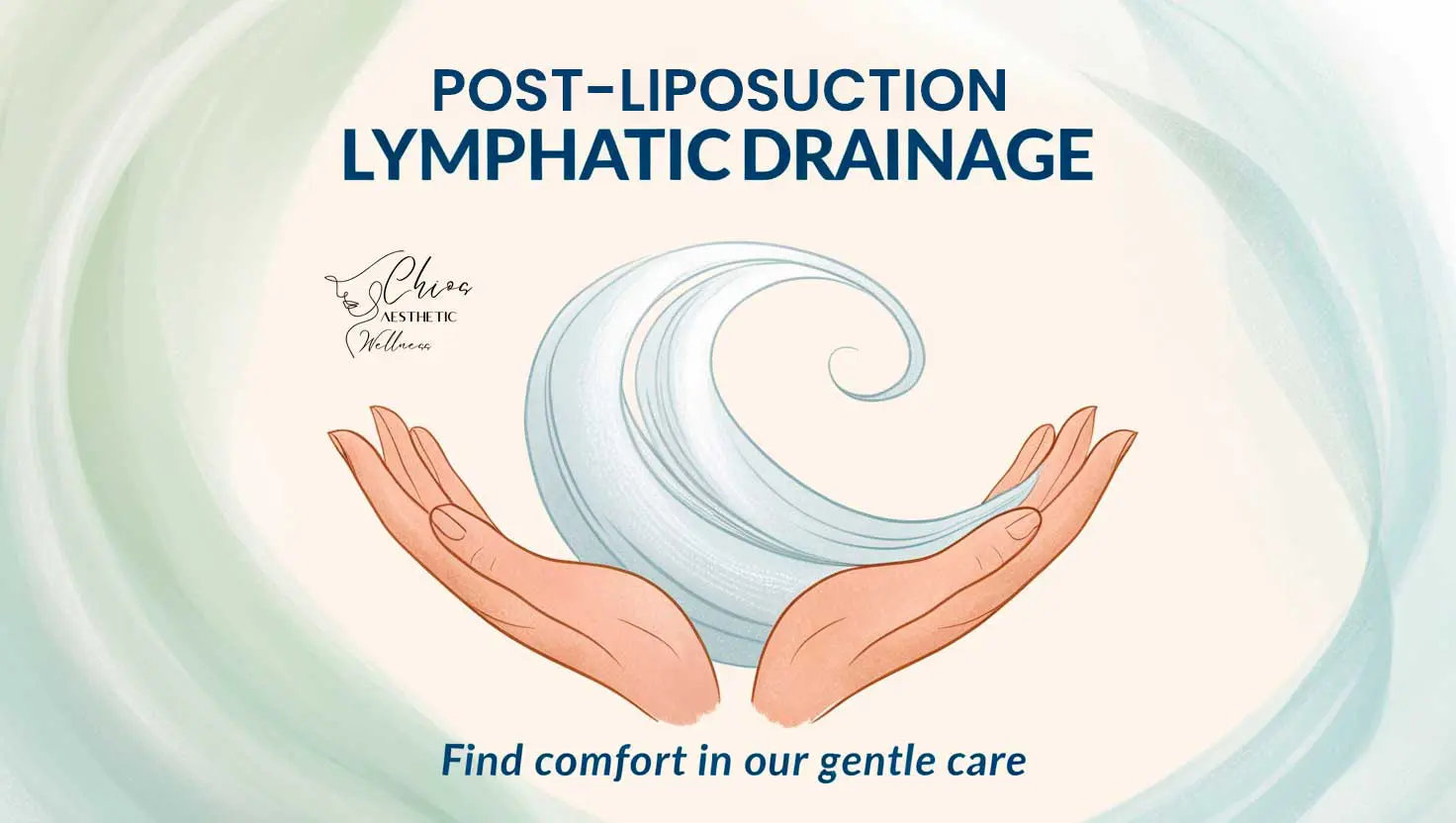If you’re about to undergo liposuction—or have already had it—you’ve probably heard about lymphatic drainage. And it’s no coincidence: this technique is essential for a quick, safe recovery with better results.
Why is it so important after liposuction?
Liposuction removes localized fat, but it also causes inflammation, fluid accumulation, and tissue tension. This is where lymphatic drainage makes a difference:
Reduces swelling and bruising
After liposuction, it’s normal for the body to swell and bruise due to the manipulation of tissues and blood vessels.
Lymphatic drainage stimulates lymphatic circulation, helping to eliminate excess fluid and accumulated waste. This reduces swelling and accelerates the reabsorption of bruises, providing faster relief and improving your appearance from the first session.
Prevents fibrosis (those hard lumps under the skin)
One of the most feared side effects after liposuction is fibrosis, an abnormal buildup of scar tissue that can feel like hard, uneven, or painful areas under the skin.
Manual lymphatic drainage, especially when performed correctly from the early stages, prevents these tissues from hardening, helping to maintain smoother, softer skin during the healing process.
Prevents fluid retention (seromas)
Seromas are pockets of lymphatic fluid that can form in treated areas, causing discomfort, persistent inflammation, or even infection if not treated promptly.
Thanks to the gentle movements of lymphatic drainage, these fluids are redirected back into the lymphatic system, helping the body drain them naturally and preventing abnormal accumulation in cavities.
Speeds up recovery
A faster postoperative recovery not only means less discomfort, but also allows you to return to your daily activities sooner.
Lymphatic drainage activates cellular metabolism, improves tissue oxygenation, and reduces pressure on affected areas, which promotes a more efficient and painless overall recovery.
Helps results become more noticeable sooner and more clearly
Swelling, stiffness, or fluid accumulation can hide the true results of liposuction for weeks or even months.
By reducing these effects, lymphatic drainage reveals the new silhouette more quickly, helping to define the body contour more precisely, which also has a positive impact on the patient’s self-esteem.

Lymphatic drainage sessions after liposuction
Post-liposuction lymphatic drainage sessions are a key part of postoperative care and are performed with a gentle, professional approach tailored to the patient’s condition. Below is a summary of what a session is like, what you can expect, and some key points:
Gentle and noninvasive
Unlike a conventional massage, lymphatic drainage doesn’t use force or deep pressure. It uses slow, rhythmic, and precise movements that stimulate the lymphatic system to eliminate accumulated fluids and toxins. The goal isn’t to “undo” anything, but rather to guide the fluid to the lymph nodes for proper elimination.
The treatment is performed on the treated area and surrounding areas.
In liposuction, the following are typically treated: Abdomen, Flanks (waist), Thighs, Back, Arms. The practitioner will apply maneuvers to these areas, but also to key areas where lymph nodes are located (such as the groin, neck, or armpits), as this is where the lymph will naturally drain.
Frequency and Duration
Duration: Each session lasts between 45 and 60 minutes.
Frequency: Initially, 2 to 3 sessions per week are usually recommended, then reduced to one per week, depending on the patient’s progress.
Total number: A complete treatment may require between 5 and 15 sessions, although this varies by case.
Early (but safe) start
It can be started between 48 and 72 hours after surgery, if authorized by the doctor. The sooner the procedure is started (without excessive pain or contraindications), the better it will prevent complications such as fibrosis or seromas.
With professional follow-up
It is essential that the sessions be performed by a specialist in post-surgical lymphatic drainage, since:
- Every body responds differently.
- Massage should not be performed if there is infection, fever, or complications.
- The pressure and rhythm should be adapted to the patient’s condition.
Important:
It doesn’t hurt. If it does, it’s not adequate lymphatic drainage.
It’s not a slimming or shaping massage. They have different goals.
It can be complemented with other treatments, but always under medical guidance (girdles, ultrasound, pressure therapy, etc.).
Your body needs support to heal
Liposuction doesn’t end when you leave the operating room. Lymphatic drainage is part of the postoperative care that enhances your results and improves your well-being.
Schedule your sessions with our postoperative specialists. Your body will thank you. Also, visit the promotions page and take advantage of current offers.

